Bees NOT pets: not a single bee can distinguish a host from a passerby. And yet they successfully propagated, receive products, guide the development. But it is necessary to understand beekeeping, only then you can use their instincts to your advantage.
This article contains basic tips for the beginner beekeeper: where to start, how to choose the bees, the type of hives, the right care, and more.
Table of contents
Where to begin?
With gaining knowledge.It is required to have at least a green (but better - accurate and complete) idea of beekeeping. Here will help books, articles, tips, beekeepers, their observations.
It would be nice to enlist the support of a nearby experienced beekeeper. Only it is necessary to try: to take patronage of a beginner means to become a beekeeper for a year, to which not everyone will agree.
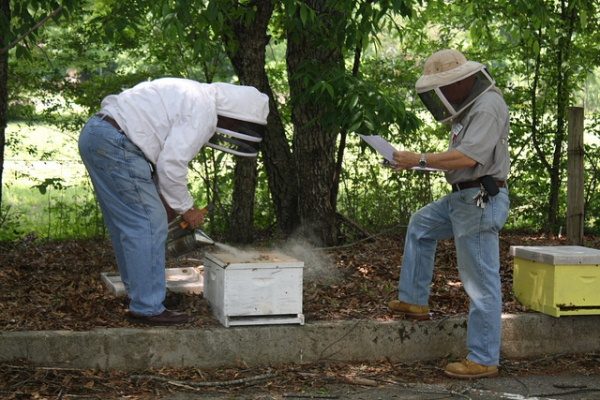
We select a place for a point. Behind the fence, preferably with growing trees (the shade helps insects in the summer to maintain the microclimate of the dwelling), a good forage reserve, next to the house and other buildings - omshanik, a warehouse, a workshop.
Do not put an apiary in the valley: it contributes to the development of diseases. Well, if the building or a solid fence cover the hives from the wind.
Purchased tools and equipment. Some things you can do yourself, some that are used infrequently and are relatively expensive (honey extractor, wax refineries), you can borrow things, although it is better to have your own.But it is difficult to do without buying a minimum — a face (preferably two) mesh, a dimmer, a beech chisel, a small amount of honeycomb, a wire for pasturing.
Examine the feed base. We take into account the area within a radius of 2 km from the future apiary, this is the radius of the productive flight of bees. Bees fly further (up to 5–6 km), but the time and honey costs as fuel, and the troubles that lie in wait for long-distance flight — birds, cultivated fields, possible bad weather, wasted time — reduce the effectiveness of the flight. The frequency of the honey collection is also important, considerable non-fetal periods lead to theft: insects in search of food are trying to rob the neighbors. What can turn into an attack when a robbed family is destroyed and stocks are dragged by robbers to their nest. In bezvalochnoe time increases and bee viciousnessthat can quarrel with neighbors, and the beekeeper himself is not a pleasure. Even in the absence of a bribe, families come to a swarm, do not work well.
Blending periods can be eliminated in two ways.
- Sowing honey plantsplanting nectar-bearing trees and shrubs that bloom in the right time.
- Nomadic - by moving the apiary to the area with the flowering honey plants.
We collect other necessary information.
All beekeeping work, one way or another, relate to these important dates.
We complete the first-aid kit. Not so for yourself (with time the sensitivity to bites decreases), as for possible guests or passers-by stung by your wards. 1-2% of people are allergic to stings, so it is better to err. To avoid possible trouble.
Official registration. By law, you need to get a passport in the apiary, even if you keep the only bee colony.
Profitability calculation
Income part. This includes the cost of bee products.
- Honey.
- Wax.
- Propolis.
- Royal jelly.
- Bee packages.
- The uterus.
- Pollen.
- Bee venom.
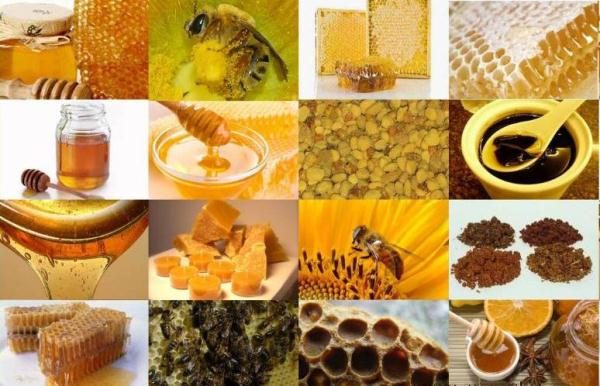
There are incomes unreliable, but possible. Payment for pollination or excursions in the apiary (if you find someone willing to pay). The sale of sub- (dead bees) or wax moth larvae for "medical" purposes. In reality, the therapeutic effect differs little, if at all, from zero, but now the fashion for such a “treatment”.
Profit depends on the following factors.
- Directionality of the apiary. We work for honey collection or breeding of queens, getting milk, pollen or poison.
- Product pricing. And if prices and the demand for honey are relatively stable, then something else ... The price of the queens strongly depends on the time of cultivation and their pure breed, and it is documented. Poison and royal jelly, especially the last, very specific product: it is required to find a buyer and strictly adhere to the rules of receipt, as it loses all its amazing properties if it is selected incorrectly.
- Productivity apiaries. It depends not only on the owner. Drought or unexpected frosts, like the weather in general, are not easily regulated.
There is also a profitable part, which is difficult to express in coins. The pleasure of messing with the bees. Increase the yield of your garden or vegetable garden. Positive effect on the health of one’s own and those close to honey and pollen, as well as stings (apitherapy is a real method).
The basis of the expenditure part.
- Purchase bees and queens.
- Hive acquisition, tools, equipment or lumber and accessories, if you make beehives, frames and other necessary things yourself.
- Construction or rental of premises: warehouse, workshop, omshanik.
- Cost of Supplies: drugs, sugar, honeycomb.
- Remuneration hired workers.
- If beekeeping is nomadic, transportation costs, watchmen, fuel.
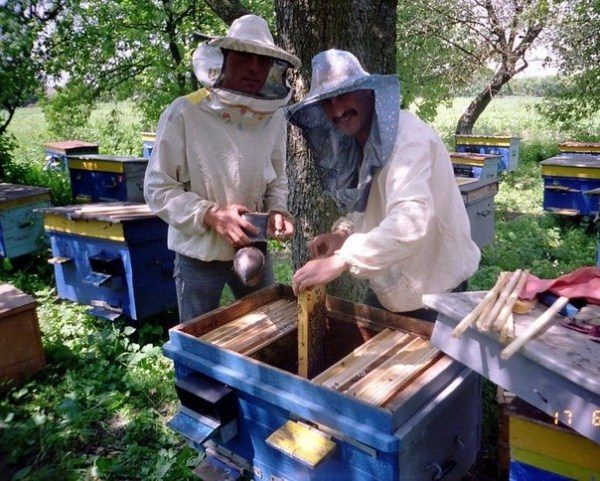
There are also unplanned, force majeure costs: payment of a lawyer / tests / experts, if there are any problems with the law or additional costs for an unexpected illness in the apiary.
Absolutely sure it is not possible to calculate future profit. If only because the nectar-bearing terrain year to year differs. But, preoccupied with the collection of information and pre-planned actions (even better - by concluding contracts for the supply of products), it is easy to estimate future profits, if not to a penny.
Used hives
Hives (decks, houses, sapettes) are now used a little, their time has passed. It is worth choosing between vertically (one-, two-, multi-body) and horizontally (sun beds) incremental hives. And also between made of wood or plastic. Foam polystyrene hives are becoming more and more fashionable.
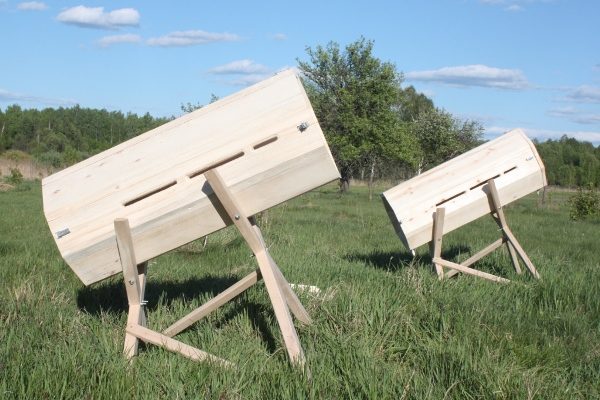
Sun beds have a slight maintenance advantage: it is not necessary to lift heavy bodies, it is easier to inspect families. At the same time, they are more cumbersome, more lumber is consumed for manufacturing, and transportation is worse.
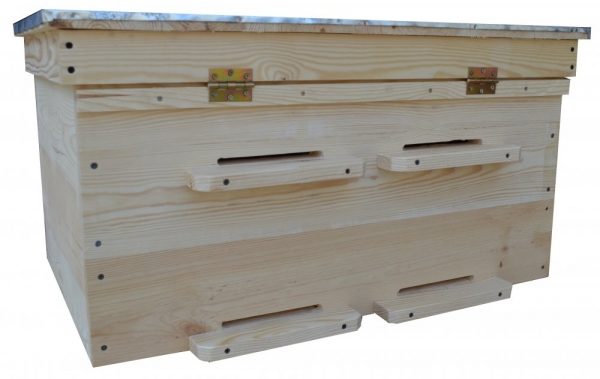
Ukrainian (Polish, Levitsky - other names for a sunbed on a narrow-high frame) are better for wintering, otherwise the same as the most used beehives for Dadanovsky, Ruta, Delovsky wide frames.
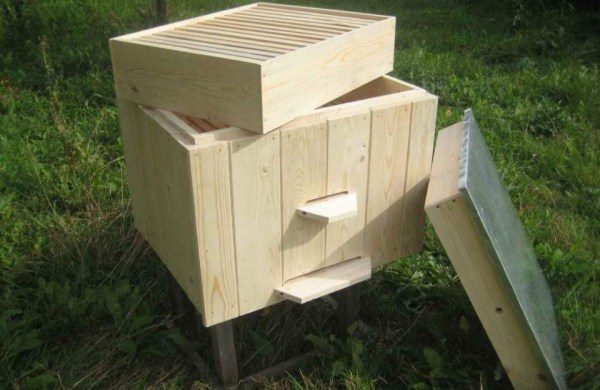
The choice of the hive is made on the basis of the following considerations.
- The orientation of the apiary: for honey collection or breeding. In the latter case, structures are chosen that favor the maintenance of several families in the hive. For cores, special hives are made for a reduced (usually - a quarter of Dadanovsky) frame. The alpine beehive is good, too, on the frame of Roger Delon: the hull is similar in size to the nucleus.
- Nomadic or stationary beekeeping supposed to
- Is there (or planned to purchase, manufacture) case hoist. And is there any power to lift the full section? If you plan to tinker with the bees in old age, you should not make a choice on heavy wooden hulls of 12 Dadanovsky frames in each.
In any case, it is desirable to have hives of the same type for the whole apiary. It helps in the work, the body and the frame are interchangeable, there is no problem with the rearrangements.
Biology of the bee family - the basis of beekeeping
Pchelosemya - a single biological unit. Separately, the bee, the uterus, and the drone live for a long time, let alone reproduce, are simply not capable.
Uterus - Mom to the whole family: only she lays eggs. All the rest are her children. Up to 3,000 eggs are laid per day (in the Italian breed, record holders in this part) eggs, the total weight of which exceeds the weight of the queen. The queen is constantly accompanied by a group of bees called a retinue: they clean, feed, protect.
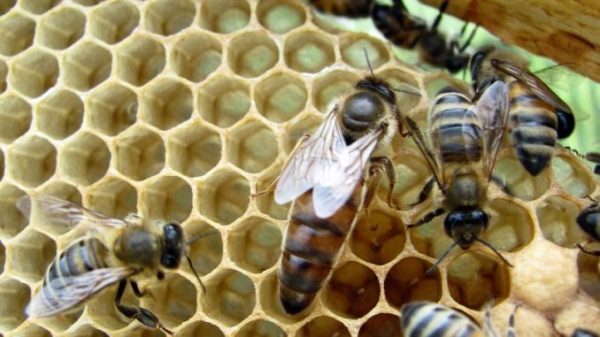
There is only one uterus in the family. In rare cases, a very short coexistence of several is possible: during swarming or in a landfill swarm, when several families sat down on one branch and transplanted into one hive.
A freshly womb is called barren.. On days 5–6, if the weather permits, she flies out to mate, where she is fertilized by several drones in flight. After that, it is called fetal. Their seminal fluid is stored in special tanks - testes. There are and artificial insemination methodwhen a liquid obtained from drones is injected into an individual put to sleep by carbon dioxide gas with a special syringe. Two kinds of eggs are laid: fertilized — from them the womb and the worker bees, and the unfertilized — from these drones.
They remove the uterus from the usual fertilized eggs, but in special larger cells - queen cells. The point of food: fed a special biologically active fluid, royal jelly.
He lives for several years, usually two, then is replaced by a beekeeper. The reason - the old uterus worse lays eggs. However, without a shift, they live longer. Uterus can be tagged, put a drop of paint on the back, then it is easier to find. Besides, paint color shows the year of inference: 7 colors are used for 7 years, then the cycle repeats. In nature, the change of the uterus occurs in the following cases.
- Silent change. Several (usually 2-3) queen cells are laid, the bred individual replaces the old, sick, or mutilated. Such a change takes place without a perceptible change in the rhythm of the family, often unobtrusively to the beekeeper. Hence the name.
- Swarmy. Several dozen mothers are laid, the bred individuals are used for reproduction.On the eve of their exit from the queen cells, part of the bees with the old queen recruit full gobies of honey. They fly out of a beehive, graft onto an inanimate object (usually a tree branch), hanging slightly, go to a new place of residence. The first (with the old, fetal uterus) such a new family is called a swarm-pervak. Next - a swarm-third, a third-party, and so on. All but the first come out with barren womb. The number of released swarms is a breed trait. On average, northern rocks release 1–2 swarms, southern ones can erupt: let go of many small, low-value swarms.
- Fistulous. Excreted in case of sudden loss of uterus. Some cells in a cell with future bees already living in them are urgently reworked. The larvae themselves feed up the royal jelly, and instead of bees, they produce uterus. The quality (on average) is worse, especially if the larvae of older age, have been eating regular food for some time, and not royal jelly. Of the larvae over two and a half days old, as they do not feed, working bees hatch.
Working bees. Biologically it is underdeveloped females, they are not able to mate. They do all the work except egg laying. There are failures in the life of the family.If the uterus is lost and the new one does not work out, then a part of the bees, which have eaten, due to the absence of brood, the royal jelly produced by them, changes. Genital organs are increasing, the bees are trying to lay eggs. Fertilized can not, therefore, all laid eggs - the drone. The drones, bred in the bee cells, do not fit, stick out, they have to be sealed, not flush with the walls, but with curved, convex lids. Such brood is called humpback, egg bees - tinder bees, family - outtaken. What is sad: without urgent intervention by the beekeeper, the family is doomed to death, the existing bees gradually die off, and only the drones are brought out ...
The first time is to clean the intestines - the bee crashes on day 4. Typically, 7–8 days young bees work inside the hive, and they are called - hives. Then they begin to fly for a bribe, they become flying bees. The bee lives from a little more than a month in the period of the main bribe to a little more than six months - hibernating, low-working bees.
Drone. Bees, male, derived from unfertilized eggs. There is no sting, it is not adapted to any works, and does not even do them.The only function is to see the flying womb and mate with it. It is in flight, in the hive do not mate. To search it has good vision and good sense of smell, exceeding that of the uterus or the worker bee. In the fall, the bees of the drones are not allowed to feed and, when they are weak from starvation, are driven out into the street. Having drones in a winter club is a bad sign. It happens only in a batteryless or family with a very bad, old womb.
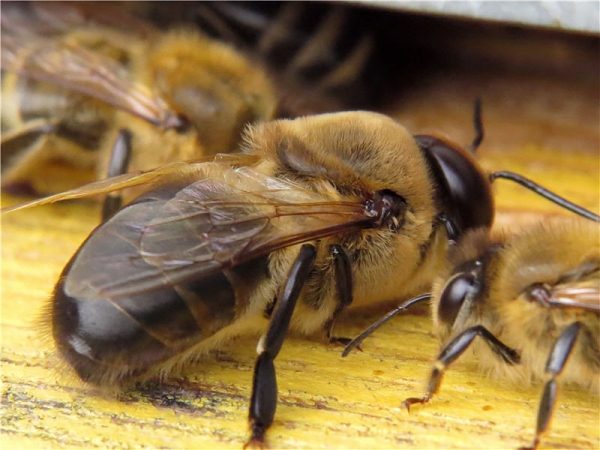
Drone develops longer than the uterus, ready for mating only 2 weeks later (the uterus - 5–6 days after leaving the cell), and the cell does not develop 16, like a uterus, and not 21, as a working individual, but 24 days. Feed to hatch requires three times more than for the bee.
A normal family consists of a queen, tens of thousands of bees, hundreds of drones. This is in summer, in winter there are no drones. Bee weight - approximately 10,000 per kg. Heavy swarms of bees, accumulated in the stock full of zobiki honey - 7 000 / kg.
Species composition
In nature, most species have single bees - bee-cutters, earthen and others, known only to specialists. The reason - you will not collect honey from them. Leaf cutters are bred for pollinating alfalfa and clover, but not often.
Beekeepers work with public bees. Small and (more often) large Indian bee, but most of all - honeybee, in Apis mellifera in Latin.
There are many breeds, the differences between them are noticeable. All of them are able to mate with each other, forming a cross between.
The choice is to be guided by the local or zoned in the place of residence of the breed. It is she who is best adapted to bribe and wintering in this area, with the latest, even the most wonderful breed can be problems. Plus worth considering features of the planned beekeeping. If you are going to grow breeding queens - we buy a specific (precisely the one that is going to grow) breed. And only her! In order to avoid getting mixed, not purebred queens. When the apiary is located at the dacha or when the apiary is kept as an emergency allowance (at school, technical school), gentleness is of great importance, even if due to medical productivity.
The acquisition of bees
Rare cases (inheritance, donated, flew abandoned swarm to the country) are omitted: unlikely. Really worth considering two ways of acquisition.
- Purchase. We get a specific breed, in the ordered time, with documents and the corresponding quality. Can not be purchased at firms, and from a friend beekeeper.Then there is a plus: there is an opportunity to bargain, at the same time get a couple of tips and agree on assistance, if that. Minus - there are no documents (usually), and the quality of delivery directly depends on the good faith of the seller.
- Swarm fishing. Minus - a greater percentage of randomness of the result, variation in the quality and pedigree of the caught swarms. A plus - cheaper. And the excitement, even a little, warms the soul. With the right approach in an area rich in bee colonies, the method is quite reliable.
Works at the apiary on the seasons
Winter. Bees in the club, half-asleep, barely alive, slowly eating honey stocks. Their goal is to endure, live to spring. Under spring, the uterus begins to read, the temperature in the brood zone is raised from the winter 14 ° C to 34 degrees required by the larvae. For bees, winter lasts from the last autumn (usually November) to the first spring (more often, March) flight. Understandably, in different localities in different ways, as applies to all other phases of development.
Spring. Overwintered individuals die off, new ones develop. Families are trying to quickly build up strength and begin reproduction. In some localities commodity bribes are possible from early honey plants, if there are many of them.From forest raspberries in Siberia, for example.
Summer. Families are actively collecting feed stocks. More - the bees breed, release swarms, or the beekeeper makes cuttings.
Autumn. The main task is to grow young, non-working insects that manage to survive until spring and have time to feed themselves a replacement. In rare places, late commodity bribes are possible - in the heathlands of Britain, but this is an exception.
Care of bee families
Bees in guardianship as such do not need, will survive without human intervention. But a good beekeeper reasonably helps the family, due to which she will collect more honey, and will suffer less from unpleasant factors (winter, illness).
It is not possible to paint all the details of caring for an apiary in the volume of the article. And in short - given what was written above about the development of the seasons, a beekeeper in each particular period helps the family with minimal losses and the maximum achievements to carry out the necessary work. How? About this - in the relevant sections of our site.
Tips for a beginner beekeeper, mistakes, results
Usually beginner beekeepers, having read, having heard enough, having dreamed up, they choose in advance for themselves both the best hive, and the best breed, and the best way of beekeeping ... And cones are stuffed,disappointed at meetings with unrecorded factors ...
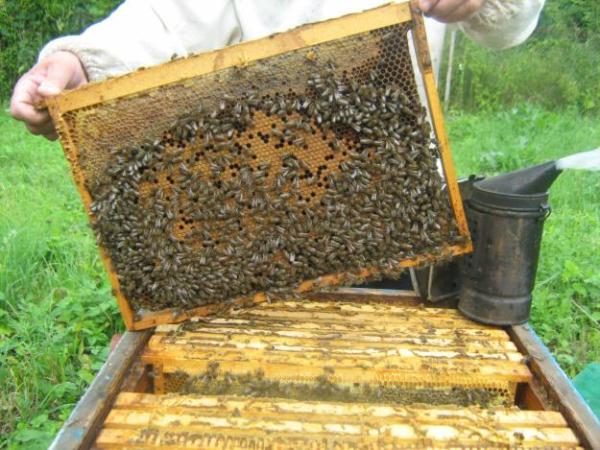
It happens differently: having heard a conservative beekeeper, they take innovations in advance, trying to accurately copy the work in the old manner of a mentor ...
Truth in the middle. Will be faithful with reason use the experience of beekeepersboldly experimenting. There are no error free solutions. There will be illnesses, disappointments, gatherings of swarms, bad seasons, and the death of families in the winter. In advance, you should tune in to a positive (rather than perfect) result. With this attitude, beekeeping will bring both pleasure and profit. Sure to!
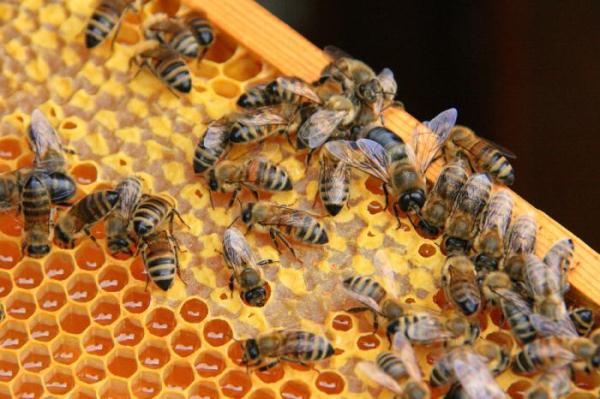
If there are two people in the apiary, one of them is a beekeeper, and the other, for example, sometimes helps the owner, then the bees often sting of this, another person. In the photo, in my not a drone, but a fly. The wings are wide apart.
Sergey, thanks for the comment. Photo corrected.
I am a beginner teapot write a new hive how to create one so that the bees got acclimatized in the new hives
The article is about nothing.